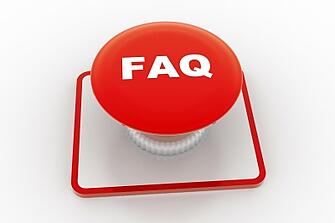What is an ESOP?
An ESOP (Employee Stock Ownership Plan) is a Defined Contribution retirement plan governed by the Employee Retirement Income Security Act of 1974 (ERISA). ESOPs are often established to create a market for private or closely held companies.
How are contributions made to an ESOP?
Contributions can be made to the plan in cash or in shares of employer stock. Contributions are allocated to participants as a percentage of their eligible compensation. When starting an ESOP, the plan can be designed so that all employees receive an allocation of the same percentage, or the company can be divided into groups with a different allocation to each group (tiered allocation formula).
Since an ESOP is a Defined Contribution plan, contributions are discretionary and determined by the Employer from year to year just like a Profit Sharing plan.
How does the ESOP buy stock from an existing shareholder?
Cash (non-leveraged) transaction:
- After starting an ESOP, cash contributions are made for one or more years.
- The cash is then used to buy stock from the existing shareholder.
Leveraged transaction:
- The ESOP borrows money from a lender. This loan is often guaranteed by the corporation sponsoring the ESOP.
- The ESOP uses the money it borrowed to buy stock from the existing shareholder. These shares are held in suspense and released as the loan is paid off.
- The ESOP uses contributions made to the plan to make the loan payments.
- As contributions are made, shares are released from suspense and allocated to the plan participants.
Are there special tax deduction rules available for ESOPs?
Tax benefits to utilizing an ESOP can be significant!
- Contributions of up to 25% of the participants’ eligible compensation are fully deductible. (In some cases, contributions can exceed 25% eligible compensation).
- Contributions are used to make loan payments, so both principal and interest are therefore deductible.
- Dividends paid on the shares held by the ESOP may be used to pay principal payments. These payments are typically deductible.
- Cash dividends paid to ESOP participants are tax deductible to the corporation.
- If an ESOP is the 100% owner of a sub-chapter S Corporation, all corporate taxes are passed through to a tax-exempt entity, so corporate income taxes are virtually eliminated.
Are there special tax advantages available for the selling shareholder?
If the existing shareholder sells at least 30% of the outstanding shares of the corporation to the ESOP, the shareholder may elect a §1042 exchange. Under a §1042 exchange, the selling shareholder is not taxed of gain of the stock if:
- The seller reinvests the proceeds from the sale of stock into Qualified Replacement Securities (QRS) within 12-months after the sale. (QRS are securities in a domestic corporation which receive no more than 25% of income from passive investments).
- Those securities are held for at least 3 years (unless the corporation who sponsored the ESOP is sold).
- The corporation establishing the ESOP must have no class of stock that is readily tradable on an established securities market.
- The stock sold to the plan must be either common or convertible preferred stock and must have been owned by the seller for at least 3 years prior to the sale.
- Family members of the selling shareholder are restricted to receiving an allocation of stock acquired through the transaction.
How is the value of the shares determined?
A valuation must be performed by an independent appraiser to determine the Fair Market Value of the stock. A valuation must be performed at the following times:
- When the plan acquires shares from an existing shareholder.
- When there is an allocation of shares to the plan participants.
- At the end of each plan year.
How do participants receive distributions from the ESOP?
As with most retirement plans, distributions are processed upon “triggering” events:
- Attainment of Normal Retirement Age.
- Disability or Death.
- Termination from service.
- Attainment of age 55 and 10-years of participation in the plan (a portion of the shares in the account may be liquidated for diversification purposes).
Participants must be given the option of taking their distribution in shares of stock, but typically they sell their shares back to the plan or to the corporation. This is called a “put” option. Since the repurchase of shares from departing plan participants might cause a cash-flow crisis, distributions may be delayed for a year or more after termination, and/or paid over time.
SUMMARY
ESOPs offer a unique tax advantaged way to transition ownership from an existing shareholder to the employees of a company. The existing shareholder may remain an active member of the company and even continue to manage the firm after the transaction. When starting an ESOP, it is important to work with advisors who have only your best interest at heart. If you have questions that move beyond the ESOP FAQs give us a call, we'd be happy to help.
